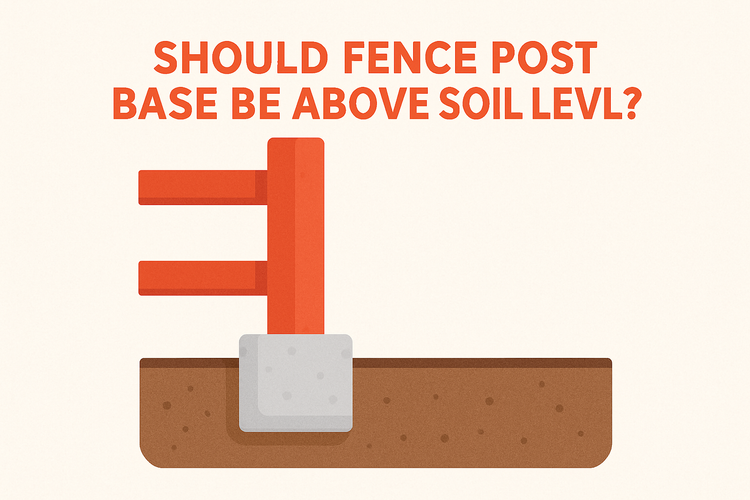Should Fence Post Base Be Above Soil Level

Why Fence Post Bases Should Be Above Soil Level
One of the most common mistakes in fence construction is setting the post base at or below the soil level. Keeping post bases above ground protects the structural integrity of your fence over time.
When post bases sit directly in soil, moisture retention becomes a major issue. The wood can rot quickly due to constant exposure to wet conditions. Elevated post bases ensure water runoff and allow the structure to breathe, significantly reducing rot and decay risks. Choosing the right Post Base can make a big difference in the lifespan and durability of your fencing structure.
Preventing Rot and Moisture Damage
Keeping your fence post base above soil is one of the most effective ways to prevent moisture damage. When timber posts are exposed to water over time, especially when in direct contact with wet soil, they begin to deteriorate quickly. Installing posts slightly above ground helps to keep their bases dry and allows airflow to keep them from collecting moisture.
You can go further by selecting treated timber and galvanised Post Base hardware designed to resist weathering. Combining this with proper water drainage around the posts ensures minimal contact with moisture. Eventually, this method saves not only money but also effort when maintaining or replacing fence sections.
Timber fences also benefit from incorporating moisture-resistant accessories. Reinforcing your structure with High Wind ties & timber connectors can enhance durability and reduce movement, another risk factor contributing to water infiltration at weaker joints or anchoring points.
Enhancing Structural Integrity
Setting post bases above the soil level helps maintain a rigid and durable fence structure over years of exposure to natural forces. Ground-level boards are more prone to shifting, loosening, and structural instability due to soil movement, erosion, and frost heave during colder months.
Elevated post bases, especially those fitted with adjustable metal brackets, anchor the posts securely while avoiding direct contact with potentially unstable soil layers. These bases ensure the uniform distribution of load, and when combined with other structural components like Joist Hangers, provide improved rigidity to any timber framework associated with the fencing system.
Improving Longevity for Outdoor Timber Structures
Any timber left outdoors is vulnerable to the effects of weathering over time. By raising the post base from the soil line you've already taken a crucial step toward protecting it from these effects. This practice not only guards the posts against rot but also discourages insect damage often found in damp soil-line environments.
Fences are often long-term investments and proper installation practices can add decades to their usefulness. If you’re working with premium timber or glulam beams, ensuring that the materials don't interact directly with soil preserves their value. Pairing these with durable components like Connectors for Glulam Timber ensures consistency and compatibility across your entire system.
Elevated post bases also make maintenance tasks easier. You’re able to inspect, clean, and re-finish the base of your posts when needed, something that’s virtually impossible when they're buried at or below grade level. This reduces the risk of hidden damage and makes routine inspections more effective.
Choosing the Right Materials and Hardware
Material selection plays a vital role in how effective an above-ground post base setup will be. Many structural issues stem from poor quality base brackets or fasteners that don’t hold up under outdoor conditions. Using properly treated metal post anchors, galvanised or stainless steel fasteners, and appropriately-sized brackets adds strength and stability.
Modern construction methods involve a variety of specialised connectors designed specifically for outdoor and timber-based projects. For instance, posts tied to cross-laminated timber can benefit from integrations using Connectors for cross laminated timber, ensuring a reliable base connection without compromising the material’s integrity.
It’s also worth considering the compatibility between different hardware pieces. Mismatched materials can lead to faster corrosion, warping, or structural weaknesses. Always opt for corrosion-resistant and pressure-treated components recommended for exterior use. By doing so, you ensure that elevation is supported by the right engineering and material science behind it.
